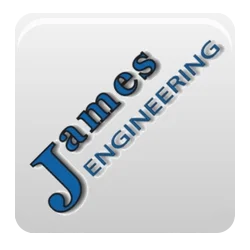The Unique History of CNC Machining | Where Did Precision Machining Come From?
In this timeline video we’ll look at when the first CNC machine was made, how it came to be, and a glimpse at the future of modern machining.
(Computer Numerical Control)
Transcript:
What does Mickey Mouse and smoking have to do with the start of the CNC machines that make your phone and attribute to almost everything we use day to day? You’re about to find out.
Let’s jump back to the post World War II era. A cultural time when
Fears surrounding the Cold War would soon come to rise. Public hysteria surrounding ideas like the suspected "Bomber Gap," would increase the US military budget aiming to compete with Soviet production. This budget would motivate and lead to advancements in the machining world.
Starting in 1946, a time dominated by manual machining with the industry-standard “Bridgeport” mill, a man named John Parson would hire another man named Frank Stulen. They would work together on helicopters for Sikorsky Aircrafts.
Stulen started using simple calculations of 17 points to cut along for each component. This idea came from his brother working at IBM using a punch card reader.
(Punch cards are essentially the original lines of code. Operators would manually punch holes in cards representing machine instructions. The cards would then be fed to a machine. The card would read the card with sensors in order to perform its operation.)
There were inconsistencies in the cuts though. To solve that Parson suggested adding more coordinates to which Stulen created a 200 point program.
This would essentially create a labor intensive prototype for what now is a 2 1/2 Axis CNC machine.
This “by the numbers method” was still fully manual though. An operator would call out numbers off a chart while two other operators, on each the X and Y axis, would move the cutting head accordingly.
With the original inconsistencies out of the way, Parson envisioned the possibility of an automated machine with the use of Punch cards.
The problem? Funding. He was originally turned away by the Airforce, but in 1949 they came around and a 200,000 dollar contract was made, which equates to roughly 2.5 million in today's money.
Among others, MIT’s Servolab engineers would be brought on to the project. Unfortunately, the budget would run out. This would lead to a new bid for the government. MIT would underbid Parson essentially taking over the project and removing his company from further development.
The NC, Numerical Controlled machine would be finished and publicly displayed by 1952. MIT would finish their machine using a quicker 7 track punch tape instead of the original punch cards.
This was the same year a company named Arma Corporation who did defense work in the war would announce the first commercial numerically controlled lathe.
Throughout the rest of the 1950s Other NC machines were developed and improved upon. A report with Boeing noted “numerical control has proved it can reduce costs, reduce lead times, improve quality, reduce tooling and increase productivity” but even with glowing reviews the NC machine uptake was slow.
The US Army itself leased out 120 NC machines which finally began popularizing them.
Hand created Punch tapes still posed inefficiency to the machines. Time spent machining the parts was essentially substituted with time dedicated to creating the tapes. Author David Noble claimed this was the whole point as far as the Air Force was concerned; moving the process off of the highly unionized factory floor and into the non-unionized white collar design office.
The inefficiencies would change During the construction of MIT’s Whirlwind Navy Computer. John Runyon used the realtime computer to create these tapes by coding subroutines. Instead of producing a part in 8 hours, it could complete the job in 15 minutes.
Following this up was a proposal accepted by the Air Force to create a general programming language for Numerical Control in 1956.
This leads us to meet our next Duo of engineers, Doug Ross and Harry Pople. Along with a team, they would spend the next several years developing a language named, Automatic Programmed Tool, APT. In 1959 their developments would be presented to the press. The demonstration would feature their APT machined ashtray and a Mickey Mouse. Connecting the two social influences mentioned earlier.
APT and other programming languages would go on to revolutionize CNC machining.-
Though this is just the tip of the iceberg, these key moments would lay the foundation of today’s CNC machines. So where does James Engineering fall into all this? Even though our machines don’t use the now outdated punch cards or tapes, we do use punch cards to clock in and out.
But let's jump to early 1980s Formula One Racing. Our founder James “Jim” Richards, was working on Transmission solutions for the F1 cars. He was a key figure in Nelson Piquet winning several Formula One world championships starting in 1981 and Gordon Johncock winning the Indianapolis 500 in 1982.
He would see the need for precision chamfering and deburring in machining and eventually bring his pioneering advancements to the rest of the world. James Engineering’s machines would reach a broad spectrum of industries and top companies including Sirkorksy, Boeing, GE, and many more.
Though CNC machines have dominated the industry for a long period of time, the machining world is constantly evolving. Just as the whole industry, James Engineering is constantly making new advancements. With the rise of additive manufacturing, use of Artificial intelligence, and other technologies, one can only imagine what machining will look like 50 years from now.
